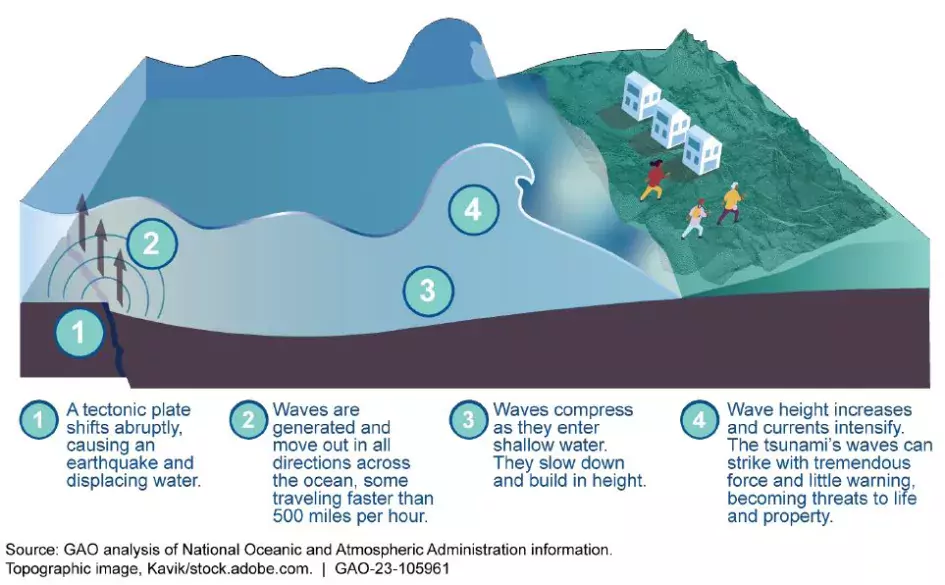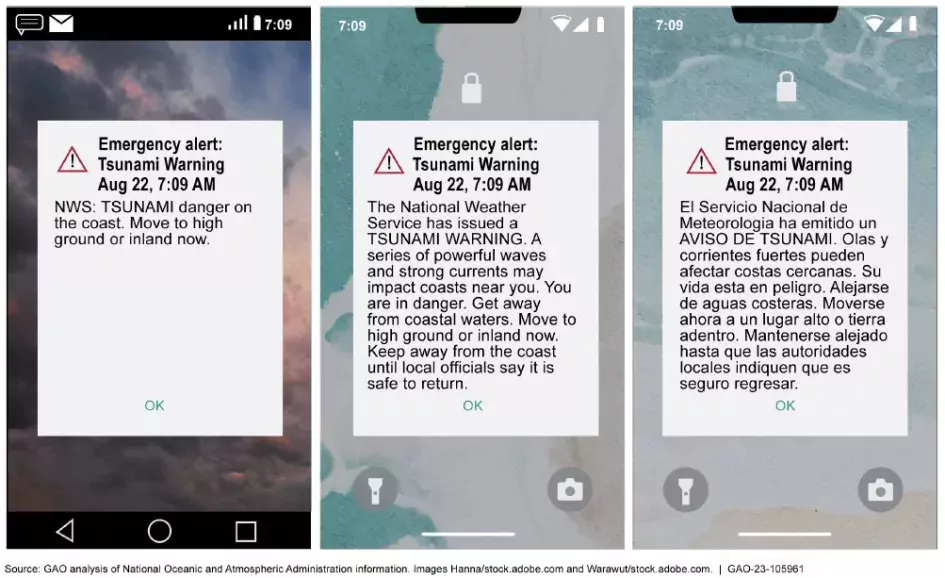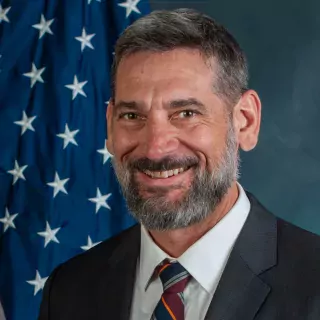Will You Be Warned If There’s A Tsunami? More Can Be Done to Ensure The Public Receives Alerts
When you hear the word “tsunami,” you may first think about a disaster movie, or the international news. But tsunamis can also occur in the United States—and about 40% of the U.S. population lives in coastal communities, which can be at risk from tsunamis.
Tsunamis are powerful and destructive waves that are mainly caused by underwater earthquakes. They can strike communities within minutes of the waves’ creation—making it critical for people living in coastal areas to be able to receive timely alerts about them.
Today’s WatchBlog post looks at our new report on how the National Oceanic and Atmospheric Administration (NOAA) alerts the public to tsunami hazards and how it could improve its efforts.
Image

How does NOAA detect tsunamis and warn the public?
To detect tsunamis, NOAA monitors seismic data about earthquakes and information on level changes, including from buoys in the ocean and coastal water-level stations.
Because most tsunamis start in the Pacific Ocean, the states of Alaska, California, Hawaii, Oregon, and Washington are at highest risk, followed by U.S. territories in the Pacific, such as American Samoa. Areas in and around the Pacific Ocean have the highest density of systems that monitor for earthquakes and water-level changes that can generate tsunamis.
An illustration of how a tsunami forms in the ocean
Image

After NOAA observes earthquake activity in the ocean, it must then quickly identify the risk of a tsunami and determine whether there’s a need to alert the public. NOAA primarily uses three methods to provide tsunami alerts to the public:
- NOAA Weather Radio, which delivers alerts to listeners who have weather radios and to the Emergency Alert System. The Emergency Alert System then broadcasts emergency messages to the public over TV and radio.
NOAA Weather Radio can be especially important in rural and other remote areas that lack cell service and internet access.
- The Integrated Public Alert and Warning System, which is most commonly known for the emergency alerts people receive on their mobile devices, like in the example below.
- The internet, via alerts on NOAA’s website and on social media.
Examples of NOAA Emergency Alerts for Mobile Devices
Image

Where are the gaps in the alert system?
NOAA’s tsunami warning centers can make decisions within minutes on whether a tsunami alert needs to be issued. But there could be improvements in the different ways the alerts make their way to people at risk. For example, during some tsunami strikes in Alaska in recent years, NOAA’s tsunami.gov website became overloaded by users seeking information about tsunamis and consequently the site became unresponsive. The failure of the website also prevented automated updates from reaching NOAA’s social media accounts. NOAA’s geographic targeting of wireless alerts to mobile devices can also sometimes be too broad, sending alerts to people in areas that are not actually at risk from a tsunami.
While NOAA is working to improve the performance of its website and mobile alerts, there is more that can be done. Some remote and rural parts of the U.S. that are at risk from tsunamis—especially in Alaska—may not have adequate NOAA Weather Radio coverage to receive alerts. In our new report, we recommended that NOAA assess the gaps in Weather Radio coverage of populated areas at risk of tsunamis and share that assessment publicly.
We also recommended that NOAA work with the Federal Communications Commission and the Federal Emergency Management Agency on a plan to enable NOAA to use the Integrated Public Alert and Warning System—which NOAA is currently using to send mobile alerts—to deliver its alerts to TV and radio broadcast audiences. This change would allow NOAA to send tsunami alerts in multiple languages and include photos, maps, and video in its alerts.
Learn more about the challenges NOAA faces in alerting the public to tsunami risks and its opportunities for improvement in our new report.
- Comments on GAO’s WatchBlog? Contact blog@gao.gov.
GAO Contacts
Related Products

GAO's mission is to provide Congress with fact-based, nonpartisan information that can help improve federal government performance and ensure accountability for the benefit of the American people. GAO launched its WatchBlog in January, 2014, as part of its continuing effort to reach its audiences—Congress and the American people—where they are currently looking for information.
The blog format allows GAO to provide a little more context about its work than it can offer on its other social media platforms. Posts will tie GAO work to current events and the news; show how GAO’s work is affecting agencies or legislation; highlight reports, testimonies, and issue areas where GAO does work; and provide information about GAO itself, among other things.
Please send any feedback on GAO's WatchBlog to blog@gao.gov.




